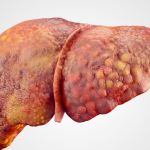The Endocannabinoid System: Self-Regulating Harm Protection
Vis Medicatrix Naturae
Jake F. Felice, ND, LMP
The nervous system remains one of the great frontiers in modern science. Meanwhile, diseases of the nervous system create immense suffering, contributing extensively to hospitalization and to the long-term care of patients. The endocannabinoid system (ECS) is involved throughout all body systems and hierarchical levels of biological organization. The ECS plays a key role in synaptic communication within the nervous system, influencing a large spectrum of functions. Cannabinoid receptors represent the most common G-protein-coupled receptor in the entire central nervous system (CNS), with the highest densities in the cerebellum, hippocampus, cerebral cortex, and amygdaloid nucleus. The ECS and its receptors are involved in mood and emotional responses, cognition, plasticity, motor function, growth and development, learning/memory, eating and food drive, reproduction, pain signaling, including interpretation and processing of those signals.
A Brief Introduction to the ECS
Cannabinoids – both endogenous and external – can act to coordinate intracellular biochemistry, intercellular communication, and all body systems without exception. Endocannabinoids affect every biological oscillator or pacemaker cell investigated,1 including circadian rhythms, rhythmical variations in blood pressure (known as Traube-Hering waves), peristalsis slow waves, and both EKG and EEG rhythms.
The ECS consists of cannabinoid receptors, endogenous ligands known as endocannabinoids (including their transport mechanisms), and endocannabinoid-metabolizing enzymes. This system functions as a self-regulating harm-reduction system, profoundly influencing multiple physiologic processes in the human body and in almost all other animals. Due to its enormous nature, a full discussion of the ECS is beyond the scope of this paper.
Cannabinoid receptors in the nervous system represent the most dense receptors of all receptor systems in the human brain.2 As mentioned, these receptors govern a massive amount of information flow in the nervous system, where they are involved in synaptic transmission, short-term memory, mood and emotion, cognition, motor function, nociception and pain perception, feeding, reproduction, metabolism, neuronal protection, synaptic plasticity, cellular and molecular mechanisms necessary for proper brain development, proliferation of neural progenitor cells, axon growth signaling, and protective effects on neuronal death induced by ischemia and glutamate toxicity.
Endocannabinoid receptors and their ligands are expressed in every animal except insects.3 These receptors operate as a finely discerning detection apparatus, continually sensing biochemical fluctuations in the interstitial space that makes up the microenvironment surrounding all cells. Additionally, the ECS operates intracellularly in organelles such as mitochondria, facilitating energy and information flow in cytoplasm.
The primary cannabinoid (CB) receptors, known as CB1 and CB2, are G-protein-coupled receptors. These 2 receptors differ in their distribution in tissues as well as in their mechanisms of signaling. G-proteins represent the most common receptor system in vertebrates, and, as mentioned above, CB1 receptors are the most abundant and dense receptors in the human nervous system. Interestingly, some other lipid metabolites that are chemically similar to the well-studied endocannabinoids, 2-AG (2-arachidonoylglycerol) and AEA (anandamide), have also been suggested to function as endocannabinoids.4 Thus, unlike most other G-protein receptors, cannabinoid receptors appear to have more than 1 endogenous agonist. Tissue levels of 2-AG and AEA are regulated independently from each other, allowing them to exert different functions even within the same cell, tissue, or organ. There has been much speculation as to why this particularity exists.
The ECS in Embryogenesis
The proper development of the human nervous system requires a precise web of molecular communication of information between nerve cells, their internal cellular structures, and the surrounding microenvironment of the extracellular matrix.5 In the brain, signaling from the ECS orchestrates molecular and cellular mechanisms necessary for proper brain development. The ECS signals, that help neurons develop, differentiate, and integrate into the neural net, continue to be poorly understood by modern science. In one pathway, CB receptors couple to FGF (fibroblast growth factor). FGF activates diacylglycerol (DAGL), thereby increasing 2-AG, which in turn primes axon guidance and growth,6 both of which are necessary for nerves to connect with their targets. This trait, combined with anti-inflammatory effects, offers the targeting of the ECS exciting potential for regenerative health benefits in patients suffering from nerve injury or stroke.7
Endocannabinoids, via CB receptors, provide developmental signals to neurons that regulate molecular machinery required for proper brain maturation.5 The receptor system provides feedback that guides the specific generation of the neural architecture; it also helps to enhance neural connectivity and brain development. These activities include the proliferation of neural progenitors, as well as axon growth necessary for communication between neurons.
Emerging research suggests that dysfunctional endocannabinoid signaling in the nervous system may play a role in disorders of development, as well as in the emergence of epilepsy.8
Retrograde Transmission
Unlike all other known receptor systems, biological information via the ECS flows backwards, or “upstream,” in contrast to traditional neural pathways – a process known as retrograde transmission.9 This is one of the ways that the ECS protects the nervous system from hyperactivity during seizures.10
A huge part of the nervous system is therefore actually involved in the reduction or limitation of neurotransmission. It has been said that, physiologically speaking, 70% of the human brain exists to slow down the other 30%.11 When such inhibitory mechanisms are impaired, “dis-inhibition disorders” can occur, such as hyperactivity, impulsive behaviors, anxiety, seizures, pain exacerbation (including central sensitization syndrome), and more.
During seizure activity, for example, neurons are overstimulated, resulting in an “electrical storm” that rages in the brain. Via retrograde transmission, the ECS allows cells on the receiving end of hyperactive events to call a “time-out” to other nerve cells by sending a signal upstream to quiet the overstimulated neural circuits.12 Amazingly, when cannabinoids are given within 4 hours of traumatic brain injury (TBI), they appear to limit glutamate toxicity13 and nerve cell damage.14
During adverse brain events such as TBI, ECS synthesis of the endocannabinoid, 2-AG, serves as a homeostatic regulator to limit brain damage.15 One important role of the ECS in the nervous system thus involves the maintenance of homeostasis via the prevention of excess neuronal activity in seizure activity and hyper-nociceptive signaling.15
The ECS enables the postsynaptic neurons to reduce overstimulation and control their own input at the synapse, and is a key element to the homeostatic regulation of physiology by the ECS. In the nervous system, presynaptic CB1 receptors on axon terminals become activated from post-synaptically discharged endocannabinoids, resulting in a reduction of presynaptic neurotransmitter release16 – a negative feedback process called retrograde inhibition.
Interestingly, retrograde inhibition also works similarly in pain pathways. When a pain signal is extreme or overwhelming, retrograde inhibition uses endocannabinoids to slow or reduce the impulses coming from a site of injury, thereby reducing the nociceptive signals moving towards the cortex.17
The ECS & Neuroprotection
Throughout the nervous system, the ECS supports energy balance by modulating mitochondria, as well as influencing inflammatory and immune responses. The main mechanisms of ECS support include protection against oxidative stress, excitotoxicity, and inflammation. Potential applications of cannabinoid therapeutics include various types of pain, drug dependence, stroke, cancer, multiple sclerosis, amyotrophic lateral sclerosis (ALS), Huntington’s disease, epilepsy, Parkinson’s disease, Alzheimer’s disease, metabolic syndrome and diabetes, anxiety, and depression.
On a molecular level, cannabinoids coordinate antioxidant activity, modulation of neural detoxification (including clearance of toxic byproducts of metabolism), and mitochondrial function. All types of cannabinoids protect neurons from multiple insults that produce neuronal death after TBI, including free radical production, neuroinflammation, excitotoxicity, and calcium influx.18
During conditions of nerve injury and axonal damage, cannabinoid receptor expression appears to be increased.19 In glial cells following inflammation or injury, CB2 receptor populations increase by as much as 100 times20; however, it is not clear whether this increase is due to increased expression on glial cells or is a result of peripheral immune-cell migration to the site of injury.
The ECS & TBI
In a rat model of experimental stroke, CBs provided protection, significantly reducing infarct volume and improving functional outcomes.21 In a study of adult patients with TBI (n=446), a positive THC (tetrahydrocannabinol) screen is associated with decreased mortality.22 Specifically, mortality in the THC-positive group (2.4% [n=2]) was significantly decreased compared with the THC-negative group (11.5% [n=42]; p=0.012). In a separate model of experimental stroke in animals (systematic review and meta-analysis of 34 publications), cannabinoids were found overall to improve functional outcomes and reduce infarct volumes.21
In a mouse study, cannabidiol (CBD) appeared to provide stronger neuroprotection than THC, and without inducing tolerance; this occurred via a CB1-independent mechanism.23 It is important to keep in mind, however, that THC has positive properties as well, as demonstrated by the TBI study just mentioned, and that the combination of different cannabinoids and terpenes may encourage more positive entourage effects.24
The findings from a mouse study of carotid artery occlusion suggest “a protective effect of CBD on neuronal death induced by ischemia and indicate that CBD might exert beneficial therapeutic effects in brain ischemia.25 The mechanisms that underlie the neuroprotective effects of CBD in … mice [with carotid artery occlusion] might involve the inhibition of reactive astrogliosis.”
The body’s levels of endocannabinoids spontaneously elevate during stroke and head injury,7 which initiates protective responses.9 Immediately after TBI, local and transient accumulation of the endocannabinoid, 2-AG, occurs at the site of injury, peaking at 4 h and sustained up to at least 24 h. Neuroprotection exerted by exogenous 2-AG suggests that the formation of 2-AG may serve as a molecular regulator of pathophysiological events, attenuating the brain damage.15
A recent study provides the first evidence for the involvement of ECS in the neuroprotective action on brain edema, axonal injury, neurological impairment, and activation of microglia.26 In a gerbil model, THC, via CB1 and opioid receptors, reduced nerve damage induced by carotid artery occlusion.27
After stroke or seizure events, excitotoxicity is limited via ECS-modulated protection against interleukin (IL)-1-induced inflammation12 via the IL-1 antagonist, IL-1ra.28 Interestingly during pain and nerve injury, the ECS responds in a similar way by elevating CB receptors involved in the attenuation of neuropathic pain.
The ECS & Seizures
Cannabinoids seem to affect seizure activity in humans. In September 2016, a survey was conducted of parents of children with refractory epilepsy who had been using medicinal cannabis for different lengths of time.29 Among 43 children from Mexico who used CBD-rich cannabis, 51% experienced a moderate-to-significant decrease in seizure frequency, and an additional 16% were free from seizures. The number of antiepileptic drugs being used was reduced in 9/43 (20.9%) cases. No serious adverse effects were reported.
CBD was shown to be effective in a rat model of status epilepticus.30 CBD had anticonvulsant and neuroprotective effects, “reinforcing the potential role of CBD in the treatment of epileptic disorders.”
Conclusion
The 600-million-year-old ECS emerged as a harm-reduction system, improving cells’ ability to form bodies and survive the often hostile and changing environment of the early ocean. The ECS maintains a constantly adaptive receptor system that functions as a biological scanning system, detecting biochemical information in the extracellular matrix. The ECS is the most dense of all receptor systems in the CNS, performing a myriad of vital functions. All types of cannabinoids protect neurons from multiple insults that produce neuronal death after TBI, including free radical production, neuroinflammation, excitotoxicity, and calcium influx.18 In humans, ECS coordination is integral to both health promotion and disease prevention. As a stress reduction system, the ECS responds positively not only to cannabinoids, but also to diet, lifestyle, and physical medicine interventions.31 The variable nature of the ECS dictates a patient-centered dosing paradigm, and necessitates a time-intensive, education-based approach to care that is consistent with naturopathic principles. This include the use of low-toxicity compounds, diet and lifestyle interventions, mind-body dynamics, and more.
References:
- Pacher P, Bátkai S, Kunos G. The endocannabinoid system as an emerging target of pharmacotherapy. Pharmacol Rev. 2006;58(3):389-462.
- Glass M, Dragunow M, Faull RL. Cannabinoid receptors in the human brain: a detailed anatomical and quantitative autoradiographic study in the fetal, neonatal and adult human brain. Neuroscience. 1997;77(2):299-318.
- Lee MA. The Discovery of the Endocannabinoid System. 2012. The Prop 215 Era. BeyondTHC.com Web site. http://www.beyondthc.com/wp-content/uploads/2012/07/eCBSystemLee.pdf. Accessed March 5, 2018.
- Di Marzo V, De Petrocellis L. Why do cannabinoid receptors have more than one endogenous ligand? Philos Trans R Soc Lond B Biol Sci. 2012;367(1607):3216-3228.
- Díaz-Alonso J, Guzmán M, Galve-Roperh I. Endocannabinoids via CB₁ receptors act as neurogenic niche cues during cortical development. Philos Trans R Soc Lond B Biol Sci. 2012;367(1607):3229-3241.
- Williams EJ, Walsh FS, Doherty P. The FGF receptor uses the endocannabinoid signaling system to couple to an axonal growth response. J Cell Biol. 2003;160(4):481-486.
- Nagayama T, Sinor AD, Simon RP, et al. Cannabinoids and neuroprotection in global and focal cerebral ischemia and in neuronal cultures. J Neurosci. 1999;19(8):2987-2995.
- Skaper SD, Walsh FS. Neurotrophic molecules: strategies for designing effective therapeutic molecules in neurodegeneration. Mol Cell Neurosci. 1998;12(4-5):179-193.
- Mechoulam R, Panikashvili D, Shohami E. Cannabinoids and brain injury: therapeutic implications. Trends Mol Med. 2002;8(2):58-61.
- McPartland JM. The endocannabinoid system: an osteopathic perspective. J Am Osteopath Assoc. 2008;108(10):586-600.
- Helmus T, ed. What is happening in the brain of a person with ADHD? January 22, 2012. Special Needs Digest Web site. http://www.specialneedsdigest.com/2013/02/adhd-neurology-brain-of-inattention.html. Accessed March 6, 2018.
- Hampson AJ, Grimaldi M, Axelrod J, Wink D. Cannabidiol and (-)Delta9-tetrahydrocannabinol are neuroprotective antioxidants. Proc Natl Acad Sci U S A. 1998;95(14):8268-8273.
- Colizzi M, McGuire P, Pertwee RG, Bhattacharyya S. Effect of cannabis on glutamate signalling in the brain: A systematic review of human and animal evidence. Neurosci Biobehav Rev. 2016;64:359-381.
- Panikashvili D, Simeonidou C, Ben-Shabat S, et al. An endogenous cannabinoid (2-AG) is neuroprotective after brain injury. Nature. 2001;413(6855):527-531.
- Mechoulam R, Shohami E. Endocannabinoids and traumatic brain injury. Mol Neurobiol. 2007;36(1):68-74.
- Mackie K. Mechanisms of CB1 receptor signaling: endocannabinoid modulation of synaptic strength. Int J Obes (Lond). 2006;30 Suppl 1:S19-S23.
- Guindon J, Hohmann AG. The endocannabinoid system and pain. CNS Neurol Disord Drug Targets. 2009;8(6):403-421.
- Biegon A. Cannabinoids as neuroprotective agents in traumatic brain injury. Curr Pharm Des. 2004;10(18):2177-2183.
- Viscomi MT, Oddi S, Latini L, et al. Selective CB2 receptor agonism protects central neurons from remote axotomy-induced apoptosis through the PI3K/Akt pathway. J Neurosci. 2009;29(14):4564-4570.
- Maresz K, Carrier EJ, Ponomarev ED, et al. Modulation of the cannabinoid CB2 receptor in microglial cells in response to inflammatory stimuli. J Neurochem. 2005;95(2):437-445.
- England TJ, Hind WH, Rasid NA, O’Sullivan SE. Cannabinoids in experimental stroke: a systematic review and meta-analysis. J Cereb Blood Flow Metab. 2015;35(3):348-358.
- Nguyen BM, Kim D, Bricker S, et al. Effect of marijuana use on outcomes in traumatic brain injury. Am Surg. 2014;80(10):979-983.
- Hayakawa K, Mishima K, Nozako M, et al. Repeated treatment with cannabidiol but not Delta9-tetrahydrocannabinol has a neuroprotective effect without the development of tolerance. Neuropharmacology. 2007;52(4):1079-1087.
- Russo EB. Taming THC: potential cannabis synergy and phytocannabinoid-terpenoid entourage effects. Br J Pharmacol. 2011;163(7):1344-1364.
- Schiavon AP, Soares LM, Bonato JM, et al. Protective effects of cannabidiol against hippocampal cell death and cognitive impairment induced by bilateral common carotid artery occlusion in mice. Neurotox Res. 2014;26(4):307-316.
- Lopez-Rodriguez AB, Siopi E, Finn DP, et al. CB1 and CB2 cannabinoid receptor antagonists prevent minocycline-induced neuroprotection following traumatic brain injury in mice. Cereb Cortex. 2015;25(1):35-45.
- Zani A, Braida D, Capurro V, Sala M. Delta9-tetrahydrocannabinol (THC) and AM 404 protect against cerebral ischaemia in gerbils through a mechanism involving cannabinoid and opioid receptors. Br J Pharmacol. 2007;152(8):1301-1311.
- Molina-Holgado F, Pinteaux E, Moore JD, et al. Endogenous interleukin-1 receptor antagonist mediates anti-inflammatory and neuroprotective actions of cannabinoids in neurons and glia. J Neurosci. 2003;23(16):6470-6474.
- Aguirre-Velázquez CG. Report from a Survey of Parents Regarding the Use of Cannabidiol (Medicinal cannabis) in Mexican Children with Refractory Epilepsy. Neurol Res Int. 2017;2017:2985729.
- Do Val-da Silva RA, Peixoto-Santos JE, Kandratavicius L, et al. Protective Effects of Cannabidiol against Seizures and Neuronal Death in a Rat Model of Mesial Temporal Lobe Epilepsy. Front Pharmacol. 2017;8:131.
- McPartland JM, Guy GW, Di Marzo V. Care and feeding of the endocannabinoid system: a systematic review of potential clinical interventions that upregulate the endocannabinoid system. PLoS One. 2014;9(3):e89566.
Image Copyright: <a href=’https://www.123rf.com/profile_nebasin1980′>nebasin1980 / 123RF Stock Photo</a>
 Jake F. Felice, ND, LMP, is a charismatic public speaker and social media expert on the topic of medical cannabis. As a consultant and national cannabis brand ambassador, Dr Felice provides scientific, medical, public relations, and compliance-based advice for companies in emerging and existing cannabis markets. He has consulted for major cannabis companies, including Willie Nelson’s brand, Cannabis Basics, Medical Marijuana 411, as well as for Seattle Central Community College and The Academy of Cannabis Science. Dr Felice is a recognized cannabis expert and blogger at www.CannabisMatrix.com and at www.DrJakeFelice.com.
Jake F. Felice, ND, LMP, is a charismatic public speaker and social media expert on the topic of medical cannabis. As a consultant and national cannabis brand ambassador, Dr Felice provides scientific, medical, public relations, and compliance-based advice for companies in emerging and existing cannabis markets. He has consulted for major cannabis companies, including Willie Nelson’s brand, Cannabis Basics, Medical Marijuana 411, as well as for Seattle Central Community College and The Academy of Cannabis Science. Dr Felice is a recognized cannabis expert and blogger at www.CannabisMatrix.com and at www.DrJakeFelice.com.










